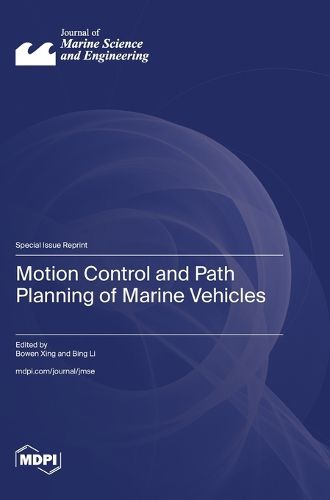Readings Newsletter
Become a Readings Member to make your shopping experience even easier.
Sign in or sign up for free!
You’re not far away from qualifying for FREE standard shipping within Australia
You’ve qualified for FREE standard shipping within Australia
The cart is loading…






This title is printed to order. This book may have been self-published. If so, we cannot guarantee the quality of the content. In the main most books will have gone through the editing process however some may not. We therefore suggest that you be aware of this before ordering this book. If in doubt check either the author or publisher’s details as we are unable to accept any returns unless they are faulty. Please contact us if you have any questions.
With the continuous improvement of artificial intelligence and sensing technologies, the marine field is ushering in unprecedented change. In this wave of change, the design and application of marine transportation have become significant tools for promoting the marine economy and environmental protection. Motion control and path planning have become key technologies to ensure that marine transportation vehicles operate efficiently and intelligently in complex marine environments. Therefore, this Special Issue focuses on motion control and path planning for marine vehicles and explores how autonomous underwater vehicles (AUVs), surface unmanned vehicles (USVs), and deep-sea landers (DSLVs) can play a key role in the oceans through optimization strategies and new approaches. We will delve into the application of intelligent and autonomous motion control systems on marine vehicles, and the innovation and optimization of path-planning techniques. In this Special Issue, we brought together the latest results from experts and researchers, aiming to share their cutting-edge research in motion control and path planning for marine vehicles. We expect that the presentation of these papers will provide new ideas and solutions to promote marine science and technology development and application. Finally, we would like to convey our most profound gratitude to the staff of MDPI Books and the editorial team of Marine Science and Engineering, in particular the assistant editors, talented authors, and diligent reviewers.
$9.00 standard shipping within Australia
FREE standard shipping within Australia for orders over $100.00
Express & International shipping calculated at checkout
This title is printed to order. This book may have been self-published. If so, we cannot guarantee the quality of the content. In the main most books will have gone through the editing process however some may not. We therefore suggest that you be aware of this before ordering this book. If in doubt check either the author or publisher’s details as we are unable to accept any returns unless they are faulty. Please contact us if you have any questions.
With the continuous improvement of artificial intelligence and sensing technologies, the marine field is ushering in unprecedented change. In this wave of change, the design and application of marine transportation have become significant tools for promoting the marine economy and environmental protection. Motion control and path planning have become key technologies to ensure that marine transportation vehicles operate efficiently and intelligently in complex marine environments. Therefore, this Special Issue focuses on motion control and path planning for marine vehicles and explores how autonomous underwater vehicles (AUVs), surface unmanned vehicles (USVs), and deep-sea landers (DSLVs) can play a key role in the oceans through optimization strategies and new approaches. We will delve into the application of intelligent and autonomous motion control systems on marine vehicles, and the innovation and optimization of path-planning techniques. In this Special Issue, we brought together the latest results from experts and researchers, aiming to share their cutting-edge research in motion control and path planning for marine vehicles. We expect that the presentation of these papers will provide new ideas and solutions to promote marine science and technology development and application. Finally, we would like to convey our most profound gratitude to the staff of MDPI Books and the editorial team of Marine Science and Engineering, in particular the assistant editors, talented authors, and diligent reviewers.